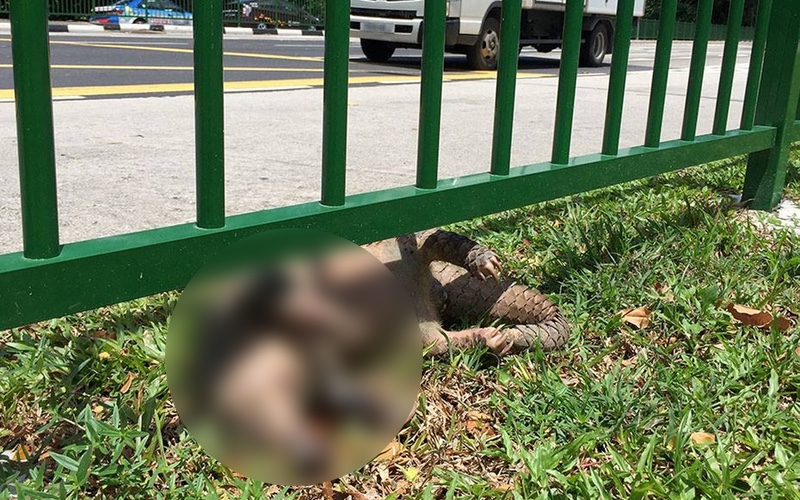In the long list of standard roadkill (frogs, pigeons, rats, angrily torn summon tickets, etc etc) we’ve seen on Singapore roads, a Sunda pangolin isn’t exactly what you’d call a common sight.
Unfortunately for this one critter, even its large keratin scales stood no chance against speeding traffic. This morning, two officers from the National Parks Board alerted the Lee Kong Chian History Museum about a pangolin carcass in the Mandai Area.
Investigations revealed broken scales and bruises, indicating vehicular impact as the cause of death. As collectors of rare animal specimens, the museum has since recovered the carcass and they’ll be analysing its stomach contents as part of a research project about the diet of pangolins.
“If you see dead wildlife, do not let them die in vain, as they are valuable for science,” the museum stated on their Facebook page, like the typical scientific blokes they are.
Though folks may be surprised to even know that our forests play hosts to wild pangolins, not many know that they’re native to Southeast Asia.
Even lesser people know that pangolins are among the most highly trafficked wildlife in the past decade — with some experts claiming pangolin sales account for 20 percent of the entire USD19 billion illegal wildlife trade.
Find out more in our Coconuts TV feature below, where our team journeyed across Vietnam to free 35 critically endangered Sunda pangolins back into the wild and explore the underground pangolin trade.





